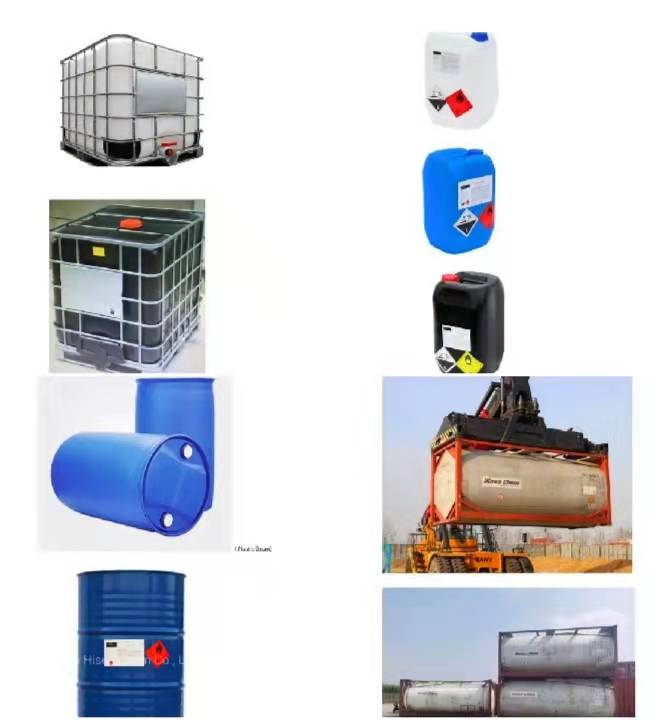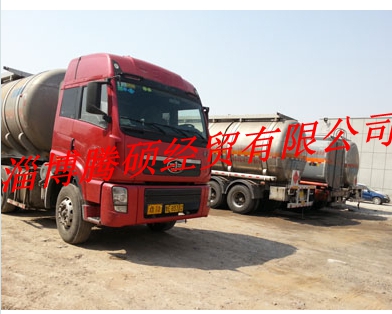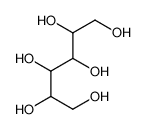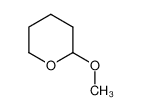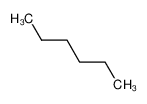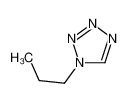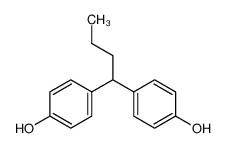| Product name | butanal |
|---|
| Product number | - |
|---|---|
| Other names | n-butyl aldehyde |
| Identified uses | For industry use only. Food additives -> Flavoring Agents |
|---|---|
| Uses advised against | no data available |
| Company | MOLBASE (Shanghai) Biotechnology Co., Ltd. |
|---|---|
| Address | Floor 4 & 5, Building 12, No. 1001 North Qinzhou Road, Xuhui District, Shanghai, China |
| Telephone | +86(21)64956998 |
| Fax | +86(21)54365166 |
| Emergency phone number | +86-400-6021-666 |
|---|---|
| Service hours | Monday to Friday, 9am-5pm (Standard time zone: UTC/GMT +8 hours). |
Flammable liquids, Category 2
2.2 GHS label elements, including precautionary statements| Pictogram(s) | 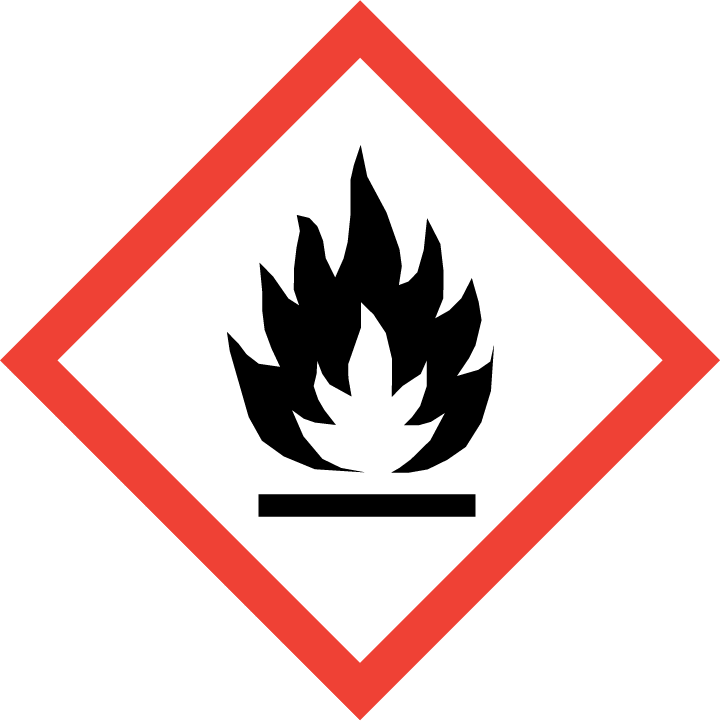 |
|---|---|
| Signal word | Danger |
| Hazard statement(s) | H225 Highly flammable liquid and vapour |
| Precautionary statement(s) | |
| Prevention | P210 Keep away from heat, hot surfaces, sparks, open flames and other ignition sources. No smoking. P233 Keep container tightly closed. P240 Ground and bond container and receiving equipment. P241 Use explosion-proof [electrical/ventilating/lighting/...] equipment. P242 Use non-sparking tools. P243 Take action to prevent static discharges. P280 Wear protective gloves/protective clothing/eye protection/face protection. |
| Response | P303+P361+P353 IF ON SKIN (or hair): Take off immediately all contaminated clothing. Rinse skin with water [or shower]. P370+P378 In case of fire: Use ... to extinguish. |
| Storage | P403+P235 Store in a well-ventilated place. Keep cool. |
| Disposal | P501 Dispose of contents/container to ... |
none
3.Composition/information on ingredients 3.1 Substances| Chemical name | Common names and synonyms | CAS number | EC number | Concentration |
|---|---|---|---|---|
| butanal | butanal | 123-72-8 | none | 100% |
Consult a physician. Show this safety data sheet to the doctor in attendance.
If inhaledFresh air, rest.
In case of skin contactRemove contaminated clothes. Rinse skin with plenty of water or shower.
In case of eye contactFirst rinse with plenty of water for several minutes (remove contact lenses if easily possible), then refer for medical attention.
If swallowedRinse mouth. Rest.
4.2 Most important symptoms/effects, acute and delayedInhalation will cause irritation and possibly nausea, vomiting, headache, and loss of consciousness. Contact with eyes causes burns. Skin contact may be irritating. (USCG, 1999)
4.3 Indication of immediate medical attention and special treatment needed, if necessaryImmediate first aid: Ensure that adequate decontamination has been carried out. If patient is not breathing, start artificial respiration, preferably with a demand-valve resuscitator, bag-valve-mask device, or pocket mask, as trained. Perform CPR as necessary. Immediately flush contaminated eyes with gently flowing water. Do not induce vomiting. If vomiting occurs, lean patient forward or place on left side (head-down position, if possible) to maintain an open airway and prevent aspiration. Keep patient quiet and maintain normal body temperature. Obtain medical attention. /Aldehydes and Related Compounds/
5.Fire-fighting measures 5.1 Extinguishing media Suitable extinguishing mediaIf material on fire or involved in fire: Do not extinguish fire unless flow can be stopped. Use water in flooding quantities as fog. Solid streams of water may spread fire. Cool all affected containers with flooding quantities of water. Apply water from as far a distance as possible. Use foam, dry chemical, or carbon dioxide.
5.2 Specific hazards arising from the chemicalBehavior in Fire: Vapors are heavier than air and may travel considerable distance to a source of ignition and flash back. Fires are difficult to control due to ease of reignition. (USCG, 1999)
5.3 Special protective actions for fire-fightersWear self-contained breathing apparatus for firefighting if necessary.
6.Accidental release measures 6.1 Personal precautions, protective equipment and emergency proceduresUse personal protective equipment. Avoid dust formation. Avoid breathing vapours, mist or gas. Ensure adequate ventilation. Evacuate personnel to safe areas. Avoid breathing dust. For personal protection see section 8.
6.2 Environmental precautionsPersonal protection: filter respirator for organic gases and vapours adapted to the airborne concentration of the substance. Do NOT let this chemical enter the environment. Collect leaking liquid in sealable containers. Absorb remaining liquid in sand or inert absorbent. Then store and dispose of according to local regulations.
6.3 Methods and materials for containment and cleaning upContaminated wastewaters containing butyraldehyde are produced during the MFR of poly(vinyl butyral) and poly(vinyl formal ethylal). On tha basis of lab tests, a scheme for treating wastewater is recommended. After neutralization with sodium hydroxide or calcium oxide, the organic fraction is distilled from the wastewater and incinerated.
7.Handling and storage 7.1 Precautions for safe handlingAvoid contact with skin and eyes. Avoid formation of dust and aerosols. Avoid exposure - obtain special instructions before use.Provide appropriate exhaust ventilation at places where dust is formed. For precautions see section 2.2.
7.2 Conditions for safe storage, including any incompatibilitiesFireproof. Separated from incompatible materials. See Chemical Dangers. Cool. Keep in the dark. Store in an area without drain or sewer access.On contact with air butyraldehyde is oxidized readily to the butyric acids. Therefore, storage under inert gas is mandatory.
8.Exposure controls/personal protection 8.1 Control parameters Occupational Exposure limit valuesExposure to acetaldehyde has produced nasal tumors in rats and laryngeal tumors in hamsters, and exposure to malonaldehyde has produced thyroid gland and pancreatic islet cell tumors in rats. NIOSH therefore recommends that acetaldehyde and malonaldehyde be considered potential occupational carcinogens in conformance with the OSHA carcinogen policy. Testing has not been completed to determine the carcinogenicity of ... butyraldehyde, ... /a/ related low-molecular-weight-aldehyde. However, the limited studies to date indicate that ... /this substance has/ chemical reactivity and mutagenicity similar to acetaldehyde and malonaldehyde. Therefore, NIOSH recommends that careful consideration should be given to reducing ... /exposure to this related aldehyde/.
Biological limit valuesno data available
8.2 Appropriate engineering controlsHandle in accordance with good industrial hygiene and safety practice. Wash hands before breaks and at the end of workday.
8.3 Individual protection measures, such as personal protective equipment (PPE) Eye/face protectionSafety glasses with side-shields conforming to EN166. Use equipment for eye protection tested and approved under appropriate government standards such as NIOSH (US) or EN 166(EU).
Skin protectionWear impervious clothing. The type of protective equipment must be selected according to the concentration and amount of the dangerous substance at the specific workplace. Handle with gloves. Gloves must be inspected prior to use. Use proper glove removal technique(without touching glove's outer surface) to avoid skin contact with this product. Dispose of contaminated gloves after use in accordance with applicable laws and good laboratory practices. Wash and dry hands. The selected protective gloves have to satisfy the specifications of EU Directive 89/686/EEC and the standard EN 374 derived from it.
Respiratory protectionWear dust mask when handling large quantities.
Thermal hazardsno data available
9.Physical and chemical properties| Physical state | clear liquid |
|---|---|
| Colour | Liquid |
| Odour | Characteristic, pungent, aldehyde odor |
| Melting point/ freezing point | 262°C(lit.) |
| Boiling point or initial boiling point and boiling range | 105°C |
| Flammability | Highly flammable. |
| Lower and upper explosion limit / flammability limit | Lower: 1.9% by volume; Upper: 12.5% by volume. |
| Flash point | -7°C(lit.) |
| Auto-ignition temperature | 230°C (USCG, 1999) |
| Decomposition temperature | no data available |
| pH | no data available |
| Kinematic viscosity | 0.45 cP at 20°C |
| Solubility | In water:7.1 g/100 mL (25 ºC) |
| Partition coefficient n-octanol/water (log value) | log Kow = 0.88 |
| Vapour pressure | 90 mm Hg ( 20 °C) |
| Density and/or relative density | 0.817 |
| Relative vapour density | 2.5 (vs air) |
| Particle characteristics | no data available |
no data available
10.2 Chemical stabilityStable under recommended storage conditions.
10.3 Possibility of hazardous reactionsHighly flammable liquid.The vapour is heavier than air and may travel along the ground; distant ignition possible.A colorless liquid, BUTYRALDEHYDE can react with oxidizing materials. In contact with strong acids or bases it will undergo an exothermic condensation reaction. The dry aldehyde may undergo some polymerization reaction. Reacts vigorously with chlorosulfonic acid, nitric acid, sulfuric acid (oleum). [Sax, 9th ed., 1996, p. 607].
10.4 Conditions to avoidno data available
10.5 Incompatible materialsIncompatible with oxidizing materials.
10.6 Hazardous decomposition productsWhen heated to decomposition it emits acrid smoke and fumes.
11.Toxicological information Acute toxicity- Oral: LD50 Rat oral 5.89 g/kg /5,890 mg/kg/
- Inhalation: LC50 Rat inhalation 60,000 ppm/0.5 hr
- Dermal: no data available
no data available
Serious eye damage/irritationno data available
Respiratory or skin sensitizationno data available
Germ cell mutagenicityno data available
Carcinogenicityno data available
Reproductive toxicityno data available
STOT-single exposureno data available
STOT-repeated exposureno data available
Aspiration hazardno data available
12.Ecological information 12.1 Toxicity- Toxicity to fish: LC50; Species: Pimephales promelas (Fathead minnow, age 29 days, length 17.2 mm, weight 0.073 g); Conditions: freshwater, flow through, 24.1°C, pH 7.7, hardness 41.2 mg/L CaCO3, alkalinity 32.0 mg/L CaCO3, dissolved oxgyen 6.8 mg/L; Concentration: 13400 ug/L for 96 hr (95% confidence limit: 13000-13800 ug/L) /99% purity
- Toxicity to daphnia and other aquatic invertebrates: LC50; Species: Daphnia magna (Water flea, age < or =24 hr); Conditions: freshwater, static, 20-22°C, pH 7.6-7.7; Concentration: 340000 ug/L for 24 hr; Effect: intoxication, immobilization
- Toxicity to algae: EC50; Species: Pseudokirchneriella subcapitata (Green algae, exponential growth phase, 15000 cells/mL, UTEX 1648); Conditions: static, 24°C, dissolved oxygen 1-2 mg/L; Concentration: 23560 ug/L for 48 hr; Effect: decreased population growth rate
- Toxicity to microorganisms: no data available
AEROBIC: Butyraldehyde, present at 100 mg/L, reached 100% of its theoretical BOD in 2 weeks using an activated sludge inoculum at 30 mg/L and the Japanese MITI test(1). Butyraldehyde had a 5-day theoretical BOD of 28% using the AFNOR T test and an inoculum from 3 polluted surface waters(2). Using a sewage inocula and standard dilution water, butyraldehyde had a 5-day theoretical BOD of 43%(3). Theoretical BODs of 43.4, 59.8, and 68% were measured after 5, 10, and 50 days, respectively, using a sewage seed(4). A 5-day theoretical BOD of 106% was reported for a sewage inocula(5). Using an electrolytic respirometer and an activated sludge inocula, theoretical BODs of 46-57% were observed after 90-135 hr of incubation(6).
12.3 Bioaccumulative potentialAn estimated BCF of 3 was calculated in fish for butyraldehyde(SRC), using a log Kow of 0.88(1) and a regression-derived equation(2). According to a classification scheme(3), this BCF suggests the potential for bioconcentration in aquatic organisms is low(SRC).
12.4 Mobility in soilThe Koc of butyraldehyde is estimated as 72(SRC), using a log Kow of 0.88(1) and a regression-derived equation(2). According to a classification scheme(3), this estimated Koc value suggests that butyraldehyde is expected to have high mobility in soil.
12.5 Other adverse effectsno data available
13.Disposal considerations 13.1 Disposal methods ProductThe material can be disposed of by removal to a licensed chemical destruction plant or by controlled incineration with flue gas scrubbing. Do not contaminate water, foodstuffs, feed or seed by storage or disposal. Do not discharge to sewer systems.
Contaminated packagingContainers can be triply rinsed (or equivalent) and offered for recycling or reconditioning. Alternatively, the packaging can be punctured to make it unusable for other purposes and then be disposed of in a sanitary landfill. Controlled incineration with flue gas scrubbing is possible for combustible packaging materials.
14.Transport information 14.1 UN Number| ADR/RID: UN1129 | IMDG: UN1129 | IATA: UN1129 |
| ADR/RID: BUTYRALDEHYDE |
| IMDG: BUTYRALDEHYDE |
| IATA: BUTYRALDEHYDE |
| ADR/RID: 3 | IMDG: 3 | IATA: 3 |
| ADR/RID: II | IMDG: II | IATA: II |
| ADR/RID: no | IMDG: no | IATA: no |
no data available
14.7 Transport in bulk according to Annex II of MARPOL 73/78 and the IBC Codeno data available
15.Regulatory information 15.1 Safety, health and environmental regulations specific for the product in question| Chemical name | Common names and synonyms | CAS number | EC number |
|---|---|---|---|
| butanal | butanal | 123-72-8 | none |
| European Inventory of Existing Commercial Chemical Substances (EINECS) | Listed. | ||
| EC Inventory | Listed. | ||
| United States Toxic Substances Control Act (TSCA) Inventory | Listed. | ||
| China Catalog of Hazardous chemicals 2015 | Listed. | ||
| New Zealand Inventory of Chemicals (NZIoC) | Listed. | ||
| Philippines Inventory of Chemicals and Chemical Substances (PICCS) | Listed. | ||
| Vietnam National Chemical Inventory | Listed. | ||
| Chinese Chemical Inventory of Existing Chemical Substances (China IECSC) | Listed. | ||
| Creation Date | Aug 10, 2017 |
|---|---|
| Revision Date | Aug 10, 2017 |
- CAS: Chemical Abstracts Service
- ADR: European Agreement concerning the International Carriage of Dangerous Goods by Road
- RID: Regulation concerning the International Carriage of Dangerous Goods by Rail
- IMDG: International Maritime Dangerous Goods
- IATA: International Air Transportation Association
- TWA: Time Weighted Average
- STEL: Short term exposure limit
- LC50: Lethal Concentration 50%
- LD50: Lethal Dose 50%
- EC50: Effective Concentration 50%
- IPCS - The International Chemical Safety Cards (ICSC), website: http://www.ilo.org/dyn/icsc/showcard.home
- HSDB - Hazardous Substances Data Bank, website: https://toxnet.nlm.nih.gov/newtoxnet/hsdb.htm
- IARC - International Agency for Research on Cancer, website: http://www.iarc.fr/
- eChemPortal - The Global Portal to Information on Chemical Substances by OECD, website: http://www.echemportal.org/echemportal/index?pageID=0&request_locale=en
- CAMEO Chemicals, website: http://cameochemicals.noaa.gov/search/simple
- ChemIDplus, website: http://chem.sis.nlm.nih.gov/chemidplus/chemidlite.jsp
- ERG - Emergency Response Guidebook by U.S. Department of Transportation, website: http://www.phmsa.dot.gov/hazmat/library/erg
- Germany GESTIS-database on hazard substance, website: http://www.dguv.de/ifa/gestis/gestis-stoffdatenbank/index-2.jsp
- ECHA - European Chemicals Agency, website: https://echa.europa.eu/







